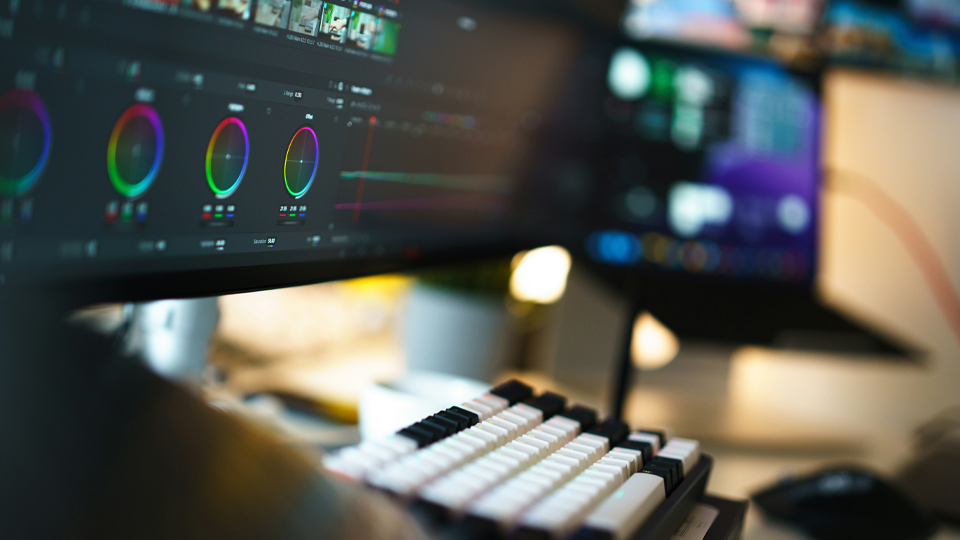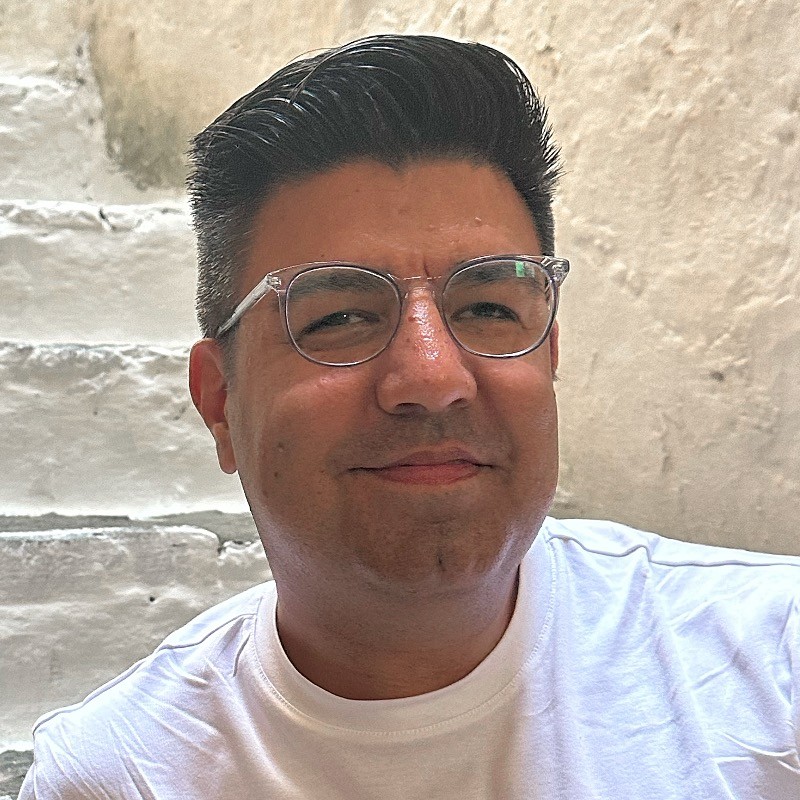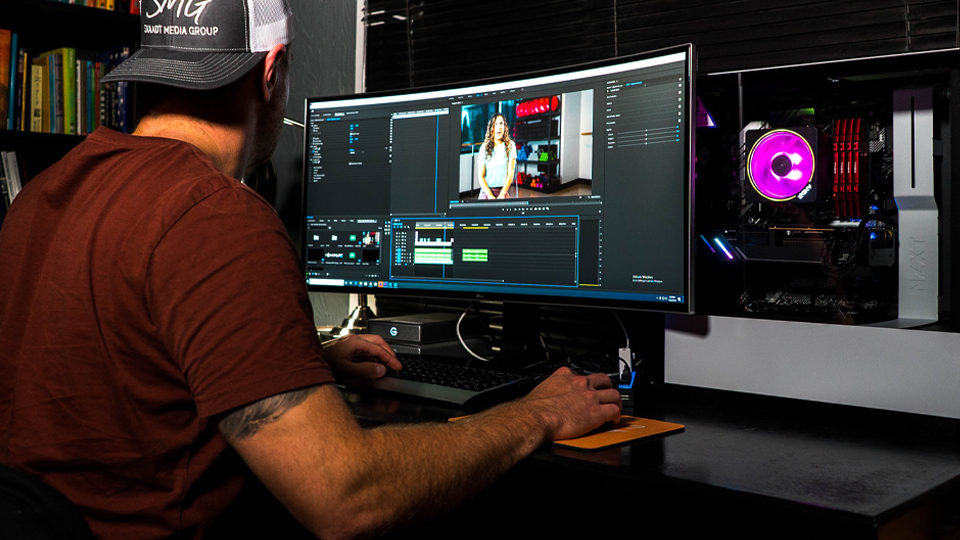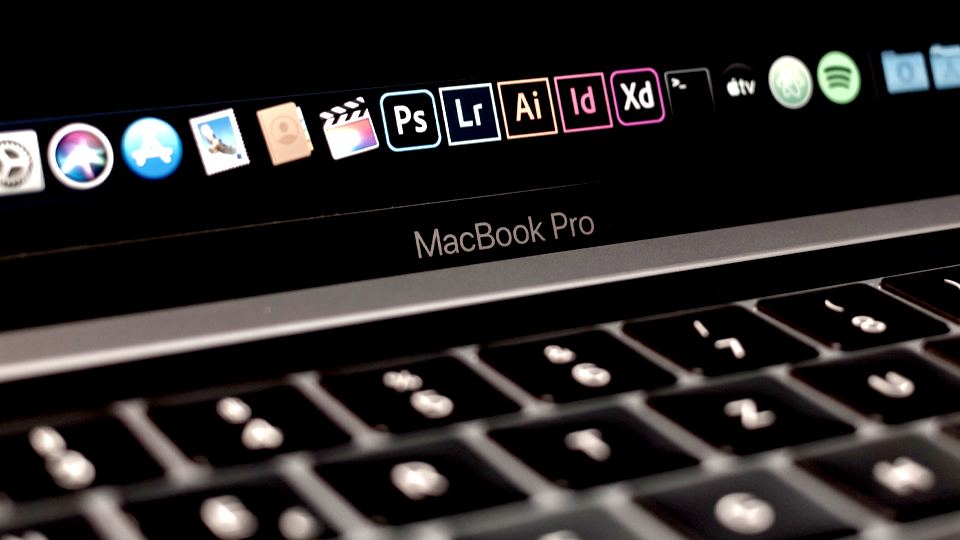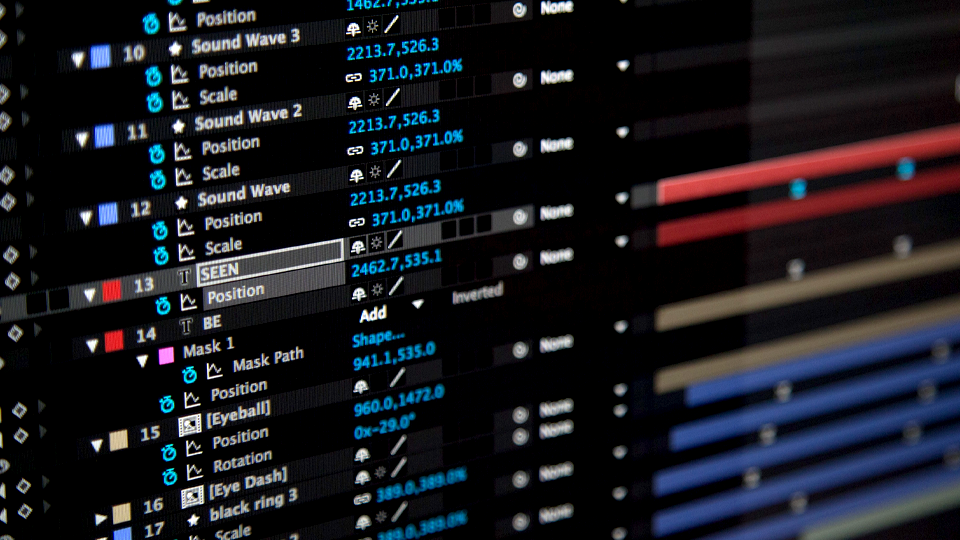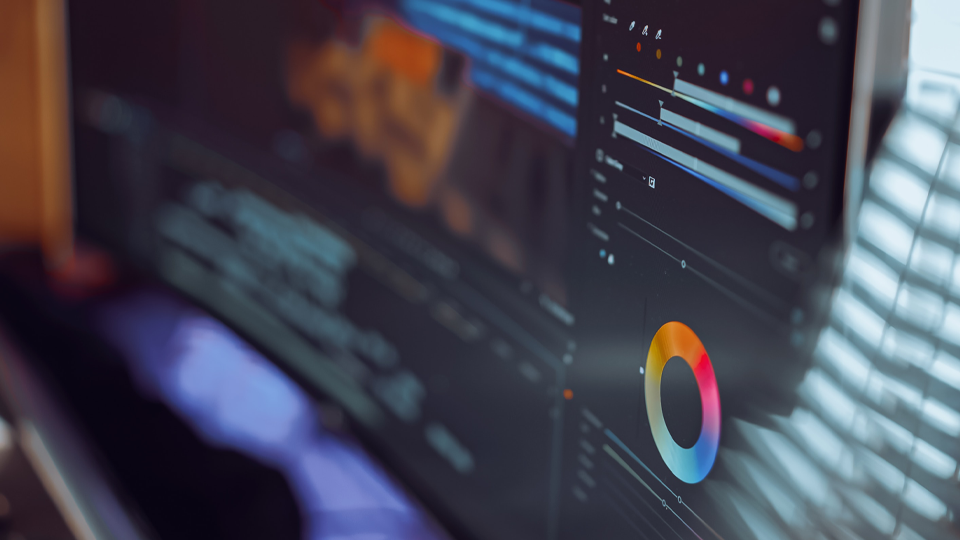Inside the Studio: Bob Partington's Mind-Bending World of Illusions
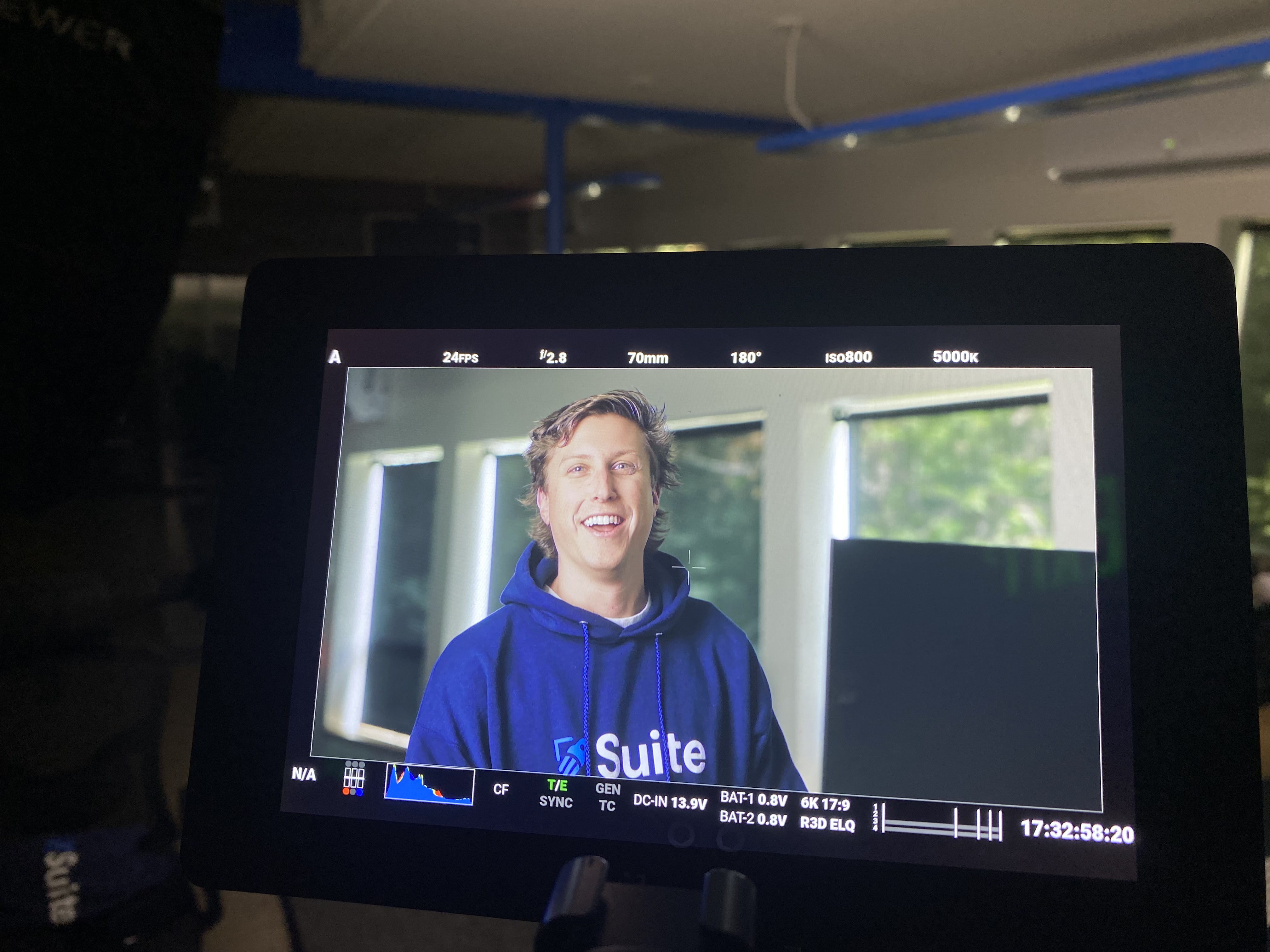
Samuel Taggart

10 Minutes
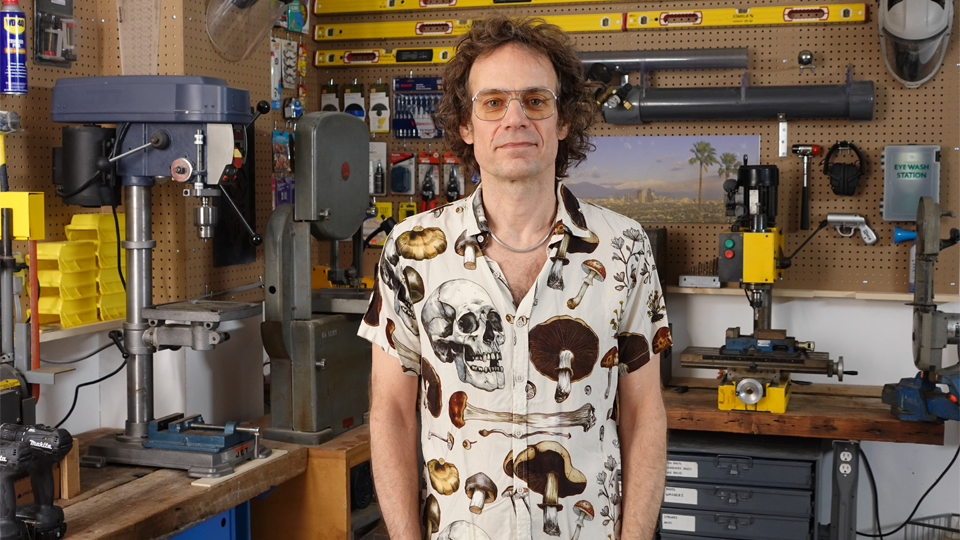
In Bob’s world, nothing is really as it seems.
Bob Partington has built a career on turning big ideas into tangible, mind-bending realities. A celebrated artist, director, engineer, inventor, and designer, Bob is the brains behind the scenes of off-the-wall commercial and creative work for Ford, Samsung, Shopify, and many more. Moving fluidly between creative direction, production design, and storytelling, Bob’s wildly imaginative videos exist at the intersection of craft and curiosity.
In this conversation, Bob reflects on the career he's built around creating eye-popping illusions. From leading OK Go to internet glory with perspective-shifting music videos, to helping household brands grab their audience's attention with MC Escher-inspired sets, to most recently creating large-scale build-outs for CreditKarma, Bob is always forcing his viewers to reconsider their point of view. No matter the project, in Bob's world nothing is really as it seems.
When was the first time you were really “wowed” by the things you create now?
I’ve always loved to build things… performative, sculptural pieces. When I lived in New York City, I became really wowed by Matthew Barney and others doing crazy performances, then documenting them with film and photography.
So, I would always document the stuff I was making, which helped me discover how the film medium can be used in conjunction with the objective thing it’s looking at. That relationship is really cool. Getting into stop motion early was huge for me because you really learn that relationship frame-by-frame; camera perspective, lens angle, framing, frame rate, and how the world behaves to the camera. Everything subsequent to that played off the idea that looking through a camera offers a different way of seeing the world. It dictates the way you perceive things.
What came first for you—being an inventor or an illusionist?
I've always been drawn to performative art—like eliciting understanding and a response from an audience, a reaction based on a shared experience. I just like to make cool things that people can engage with… but there’s a sweet spot between appreciating a build in its entirety, and a straight up illusion for it's own sake.
It’s fun to fuse the two. Every video is an illusion in some way…
Exactly! Way back, I spoke to a psychologist who said, “There's this a board of directors in your head—they decide what reality is.” I feel like this statement so clearly explains how you can subvert reality with film—it’s this elastic relationship. We can create a reality for the lens, and however we do that is extremely flexible.
Let's talk about your recent shoot for CreditKarma. What's the scoop?
It's funny, everything happens in trends. When I first got into production and direction, around 2010, there was a rejection of CGI. I was getting a lot of projects with in-camera builds. Now, while everyone’s embracing AI, LED volumes, and digital, there's been this rediscovery of real, tangible content. Things are turning back to the practical.
So, for these CreditKarma spots, they were looking for something elevated—they wanted to get into more artful, conceptual territory. The advertising industry often plays a lot of things safe, using comedy, live action, heavily scripted content. But we landed on something insane. Each one of these creations was a storytelling device with an illusion or trickery built into it, each one created a perception trick. But you could also step back and just appreciate the whole thing. All in all, it was four big projects, metaphors for different aspects of CreditKarma’s app and interface.
We initially wanted to shoot in a museum, but the set got so big that it couldn’t fit… we needed a sound stage! One set was a giant fun house. Another was a big hanging POV sculpture with many orbs, and when you looked at it from different angles it created different images. For another—just to prove the scale of all this—we made a 16-ton roadway, using forced perspective with a car at one end and a treadmill at the other. We literally had a car chained and welded to this giant teeter-totter 20 feet up in the air. Cranes had to come in to support it. It was nuts! [Laughs]
Why did it feel unique to work on this massive commercial project?
It felt like a rare opportunity in the commercial space, being trusted to execute these giant, conceptual art projects.
Just the scope of it all. We were using huge cranes. The world’s largest treadmill. It was just big business. And it was supported by some really great people like Jeff Cronenweth, who shot Fight Club and The Social Network, and Ethan Tobman, the creative director and production designer for Taylor Swift’s The Eras Tour. It was very “filmy” and fun, and life-changing in that it reaffirmed my love of the craft… to be immersed in the huge expanse of the film world.
Zooming out, how do you approach each new project or pitch? Where do you start?
Ideally, I just start by drawing. With enough time, I like to storyboard the idea first, then I get into writing copy and building out the story structure. If I can thumbnail a rough storyboard, I'm 90% of the way there. But that usually takes more time than I have, so I usually get sketches done, then work on copy.
Today, there's really never enough time to give each project the thought it deserves, but that's just the state of things. It’s crazy that everyone's decentralized. When I work on a pitch, there's layout people over here and someone pulling images over there, there’s a storyboard artist somewhere else... It’s not always the easiest thing to find that creative moment, but there's always the challenge of winning a job that makes the juices flow.
What’s the key to keeping the creative process flowing when everyone’s working remotely?
It can be difficult to get all the gears turning in the creative process when everyone's in different places. But there's something to be said about adding structure to a project early—you can get a lot done in the preamble, the leading-up-to. Then, the instant you land in the same room, it’s one big love fest and you get so much done. That’s one of the things I love about production—people still have to come together on the set to make the actual content.
How do you know when an idea is worth pursuing?
I had a teacher who would always say: Can you live with it?
That question really works. Ask yourself, and you’ll usually get a pretty good answer...
How do you translate that individual gut feeling into something collaborative?
As an artist, you have to be an independent machine—but video production is really cool because collaboration can introduce completely new ideas. Usually, when I work with production designers, they're more strictly focused on building sets. But when I worked with Ethan [Tobman] for the CreditKarma spot, the final concept was a full product of our collaboration. I'm not sure if his idea ever crossed my mind because, engineering-wise, it raised red flags. While I might’ve just dismissed it, that extra perspective led us to try it. That’s what I love about the process.
In your career, you've you've played with the idea of Russian dolls, Zoetropes, MC Escher staircases… What are some of your favorite illusions to work with, and why?
My favorite thing, my go-to, is to flip the script—like turning the ladder to screw in the light bulb.
But, it's usually about doing anything new and different. In the fun house for CreditKarma, I worked really hard to get one number to change another number using curved mirrors, which you san see happen in the final spot.
When we built the roadway, we were taking a world, putting it on a teeter-totter and turning it 50 degrees; in theory it was simple, but when you put a car on top of it, make it 40-feet long, and it ends up weighing 16 tons, it becomes this really incredible feat of physics and engineering to actually put it into practice.
Generally, it's all about taking an idea and putting a spin on it, something that hasn’t been seen before.
As we continue to trend toward more digital effects, how is the role of inventor evolving?
I think there's always room for real-world invention. Everything is skill-based, no matter which discipline you’re in, and the best effects have an aspect that brings us back into the reality of the place we occupy. So, no matter how far we look to digital solutions, there should always be something grounding in our reality. We don’t live our lives in a virtual world… just yet. [Laughs] But there’s always room to be innovative; I never find a shortage of that in the real-world.
VFX are usually just necessary steps to finish up an idea—but it’s only effective when it’s done well. No matter where technology goes, it's still a lot of work to make something look right. When you can identify a device that’s being used, like in the original Jurassic Park, they can be scary—but the real effect comes from the entire process, the camera work, the relationship between the subject and the camera in actual space.
Even if you’re extending sets with CG or using an LED volume, if the camera becomes a virtual camera, like in some Marvel movies, you sorta lose your marbles. You lose your sense of everything and get this glazed feeling, like everything is just coming at you. At that point, nothing is anchoring you to the real, physical world anymore…
The further we get into fantasy, superhero, Marvel stuff, where it’s pure fantasy, those effects have to be digital. It has to be rooted in effects. When it's magical reality, when it's closer to the real world, that's always cooler to me. I really love when there’s that interface where reality ends and the virtual begins.
What advice would you give to young inventors, artists, and filmmakers?
Learn all you can. I've always bounced around to something new. I ended up trying a lot of different things, different media and mediums, like learning fabrication in a car manufacturing plant in Mexico or doing stop motion animation in New York. I was always down to travel, go wherever the work existed, and I was ready to make a lot of mistakes.










